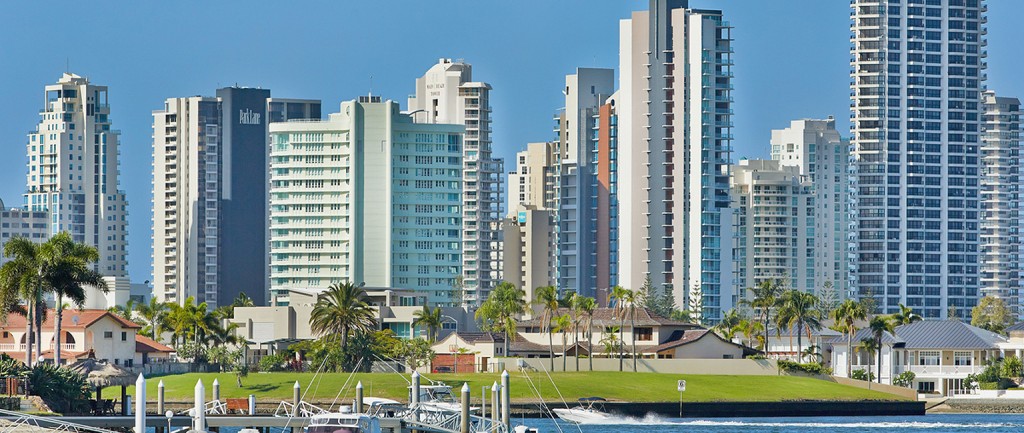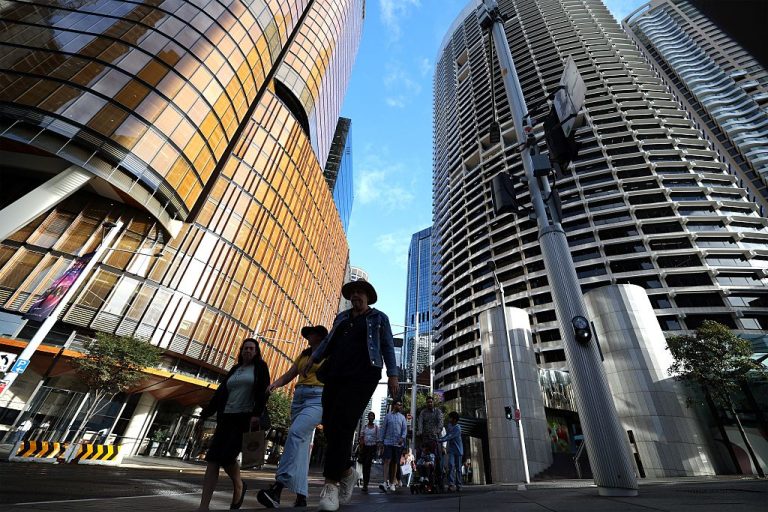Moody’s warns of commercial property ‘distress’

Moody’s has sounded the alarm on “pockets of distress” in the commercial property sector, potentially seeing the big banks’ renewed interest backfire at the same time an apartment building boom threatens inflated residential property prices.
In its latest review of the big four banks, the ratings agency said risks facing the industry were on the rise, with office property and apartment glut worries emerging as ‘‘credit negative’’ events.
The big four are seen as able to cope with the growing problems — partly because of improved lending standards — although rising office property vacancies in Brisbane and Perth present a clear challenge.
Fundamental shift: Asian investors zero in on Brisbane office market
“Australia’s commercial real estate sector is showing pockets of distress on the back of the slowing pace of economic growth in general and exposure to some commodities-sensitive regions in particular,” analysts led by Maadhavi Ramanayake say.
“Vacancy rates are increasing … as resource-related tenants in Perth and public sector-related tenants in Brisbane scale back their office space requirements, and as new supply in both areas becomes available.”
A jump in non-settlements could expose residential property developers to elevated levels of financial risk
There have been hints of a recovery in Brisbane, Moody’s adds, but the market still lags behind its peers.
By contrast, office rents have jumped in the major gateway capitals of Sydney and Melbourne and buildings are changing hands at record low yields as the markets are seen as good value by global investors.
At this stage the ratings agency perceives little “spillover risk” with the Melbourne and Sydney office property markets stable, tempering the threat to a “manageable” level for ANZ, Commonwealth Bank, NAB and Westpac despite a recent uptick in lending to the sector.
Related exposures have grown by 5% or more over the last three years on the back of more modest growth of 1-4% through 2012 and 2013.

An apartment building boom could threaten inflated residential property prices.
Overall, office property accounts for about 6-8% of total committed exposures for the big four.
“Moody’s stress tests show that, even in a scenario of isolated severe stress on commercial property and related loans, the major banks will only suffer a mild deterioration in their Common Equity Tier 1 ratios,” Ramanayake says.
The stress test analysis pinpoints NAB as the most at risk, with its tier-one capital ratio tipped to slide 110 basis points over two years, based on a particularly bearish scenario for commercial property. This is 20-30 basis points worse than its rivals.
A bigger risk may be presented by the booming apartment building sector as a glut appears on the horizon in key regions. This could ultimately hit office property as rising values in many areas have been partially driven by the conversion of many buildings into units.
“New apartment settlements across major cities over the next 12-24 months will be substantially higher than historical trends. This is in addition to the existing turnover of apartments which further increases supply,” Ramanayake says.
Australia’s commercial real estate sector is showing pockets of distress on the back of the slowing pace of economic growth in general and exposure to some commodities-sensitive regions in particular
“This jump in supply is occurring against two unfavourable backdrops, namely falling migration and tighter bank lending regulations.”
Enhanced settlement risk, regularly raised as an issue by the Reserve Bank this year, is a reasonable expectation given the supply-demand dynamic, Ramanayake says.
Should buyers begin reneging on deals with greater alacrity, the nation could see property prices trend down after a period of remarkable growth.
“A jump in non-settlements could expose residential property developers to elevated levels of financial risk,” she says.
“Furthermore, it could depress overall market sentiment and put downward pressure on general house prices.”
In contrast to the commercial property sector, it is Melbourne and Sydney that are seen at greatest risk of an apartment glut, ahead of Brisbane, which is facing headwinds across both commercial and residential sectors.
This article originally appeared on www.theaustralian.com.au/property.







